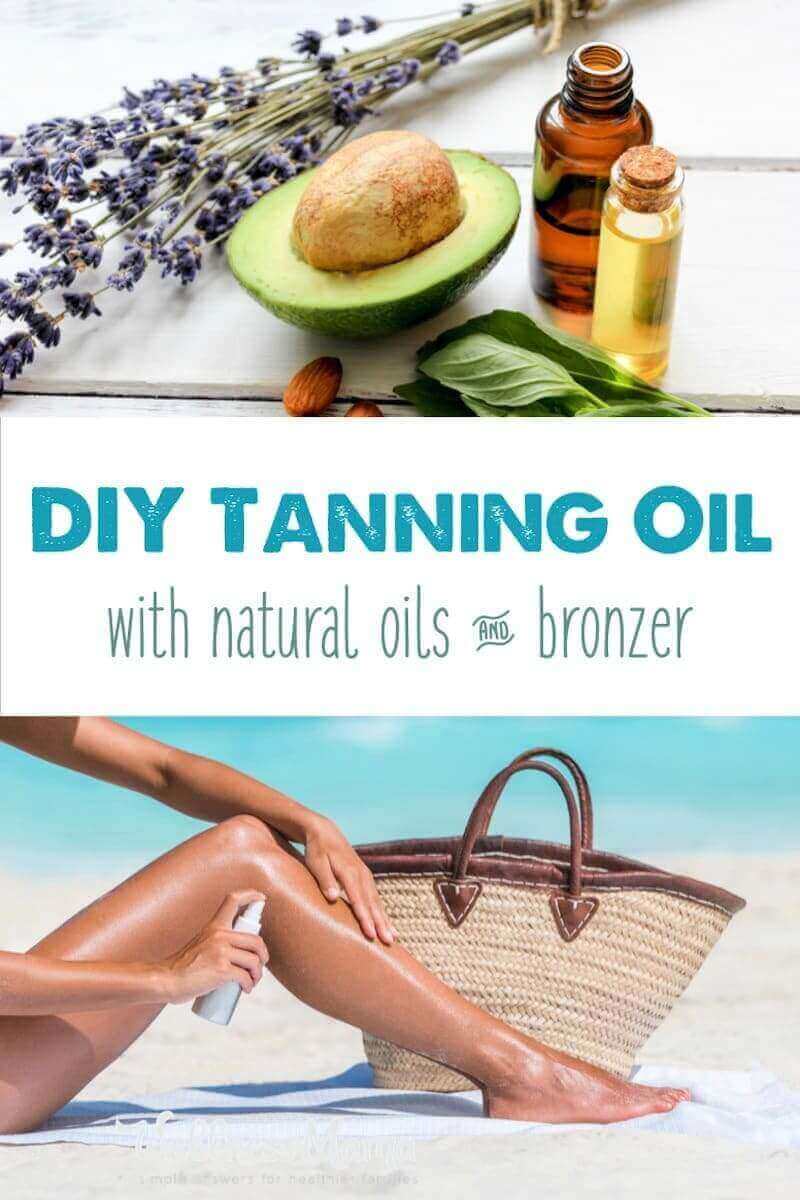I’ve used a variation of this homemade tanning oil for years. After a recent question from a friend about homemade tanning oils, I decided it was time to post the recipe.
I do occasionally use my homemade sunscreen if I’m going to be out in the sun for a long time. In general though, I prefer to get the free vitamin D from its source via moderate sun exposure. I prefer to eat my sunscreen rather than slather it on my skin…
Sometimes I’m at the beach (which is a lot now we live near one!) Or somewhere I can alternate between reading a book and being in the sun or under an umbrella. Here, I like to use natural oils which nourish my skin and provide a slight protection without blocking the vitamin D.
DIY Tanning Oil
Although many of my dishes are solid, I have also included some liquid recipes. The lotion bar The following are some examples of how to use Body ButtersThis is a liquid lubricant. It is easier to carry around. You can use virgin coconut oil, which hardens when heated to 76 degrees.
Sun Protective Natural Ingredients
The topic is a little murky. Researchers tested other oils and raspberry seed oil over a decade to determine SPF values. The results of the tests showed SPF values up to 50 and 25 against UV rays.
These studies have been criticized by scientists in recent years. They were done in vitro (not on actual skin) and didn’t follow commonly accepted SPF test guidelines.
In a study from 2021, raspberry seed oil was found to have a SPF of 2.6 (and not 25-50). The SPF of other oils tested ranged from 0 – 2.8. The researchers commented that anything below 1 SPF wasn’t providing any sun protection at all.
A 2010 study examined the SPF for both essential oils and carrier oils. Carrier oils were rated from 2-8 SPF and essential oils between 1-7 SPF. Olive oil and peppermint oil were the top-scoring oils. Not so fast! This study wasn’t done on human skin and even the authors state their results didn’t nail down final SPF values when used on skin.
The SPF rating of carrot seed oil products tested showed a value of 7. Carrot seed oil, however, was mixed with other ingredients to test.
Are there any natural oils with SPF to aid in a safe tan?
The Safer Tan Lotion
Although some oils may or may have no SPF protection at all, they have many skin benefits. Combining these oils in a homemade tanning lotion oil helps to nourish and protect the skin, and also aids in vitamin D production. It’s important to note that these are not a substitute for regular sunscreen.
- Olive Oil – Has oleic acid that supports clearer skin and phytosterols to attract moisture. It soothes and repairs sun damage. Squalene is also present in high concentrations, which protect our skin and has anti-aging properties. Traditional olive oil was used by Mediterranean countries to protect skin and achieve a dark tan.
- Avocado Oil – Rich in vitamins A, B, and E, proteins, and amino acids. It increases skin’s collagen. It is high in UV-protectant carotenes to protect skin from sun damage.
- Carrot Seed Oil – High in vitamin A beta-carotene and vitamin E to protect against UV rays. This is NOT to be confused with macerated root oil of carrots (which is orange), or carrot seed essential oils. Cold-pressed oil from carrot seeds is a natural dark green and looks like olive oil.
- Raspberry Seed Oil – High in antioxidant vitamins E and A. Raspberry is also a lighter oil that doesn’t feel greasy when applied.
Addendum: bronze mica powder for a subtle bronze glow, but you can omit this if you don’t have it or don’t want to use it.
Adding Essential Oils
I used lavender and sandalwood oil for their benefits to the skin and scent. Australian sandalwood costs less, and Indian sandalwood has more sweetness. Because sandalwood is at risk of becoming endangered though it’s important to buy from an ethically harvested source!
If you wish, you can substitute the essential oils or leave them out altogether. If you do swap them out for a different essential oil it’s really important to not use phototoxic ones! Some essential oils, such as bergamot, cold-pressed lemon and lime can cause severe skin burns when used before exposure to the sun.
Important: Sun Exposure Safety
This recipe is not for sunscreen but rather a mild sunblock. It’s important to test with small amounts of time in the sun to find what works best for your body and skin type. I’m sharing what worked best for me, but tweak it to fit your skin type and desired result.
All the usual warnings apply: sunburns are never healthy and must be avoided. It is best to avoid spending too much time in the sunlight, especially if you are prone to sunburn.
If you’re unable to tan, this recipe will not magically help you tan. I’m NOT advocating regular tanning in an electric bed, and only use this for moderate and natural sun exposure. Check with a dermatologist if you’re unsure about any of these ingredients or want to know if this recipe is specifically good for your skin.
Homemade Tanning Oil Recipe
It’s easy to make this nourishing, natural tanning oil and it smells great! Use with moderate sun exposure to get a sun-kissed tan and glow.
-
Mix all oils, and if desired, mica powder. Store in dark-colored glass containers. If you decide to substitute coconut oil for olive oil, store it in a jar instead, as it won’t work with a pump.
I use this as needed for mild sun exposure and it’s helped me get a golden tan without burning.
Use you tanning oil? Are you ready to try the natural version?
